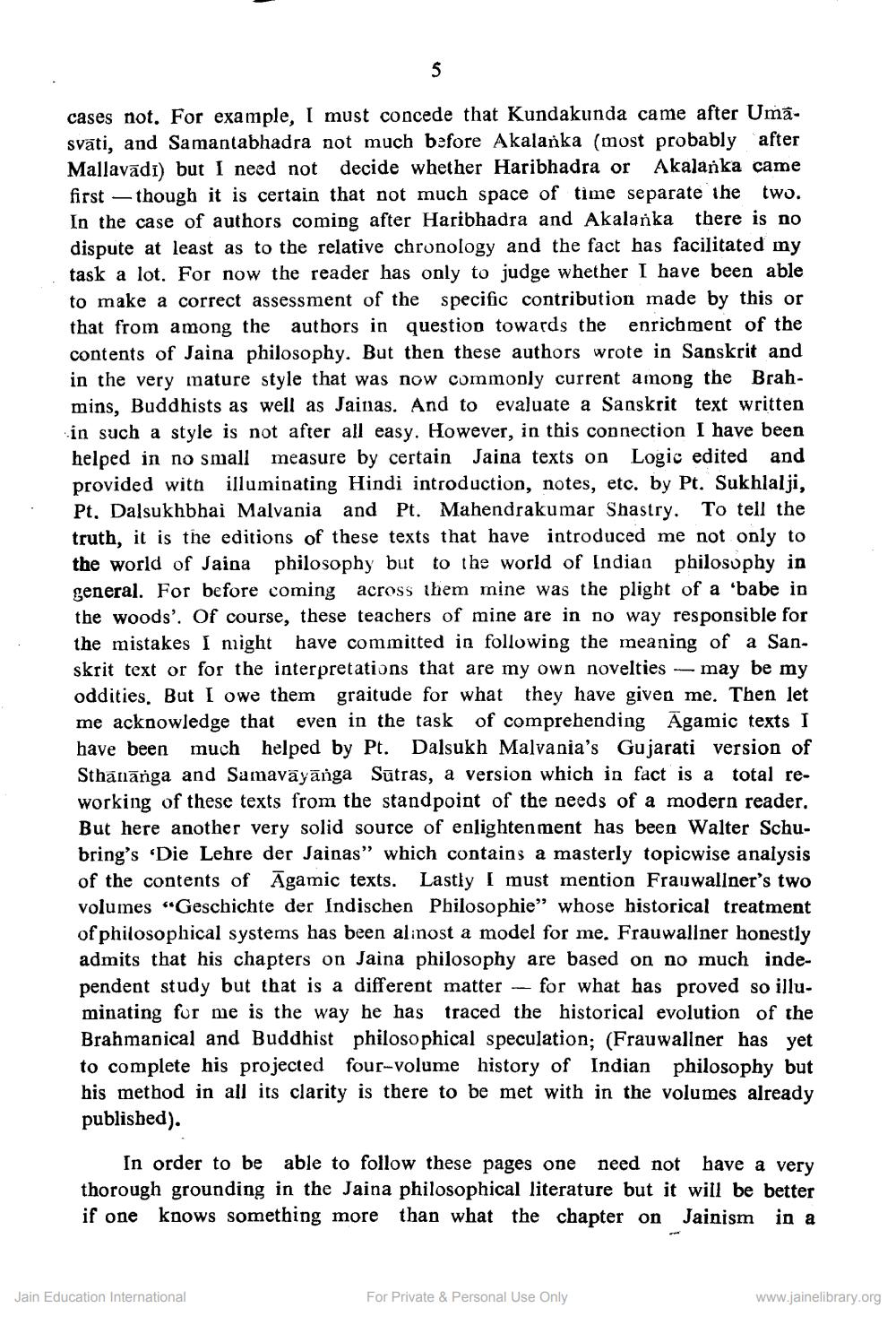Book Title: Jaina Ontology Author(s): K K Dixit Publisher: L D Indology Ahmedabad View full book textPage 6
________________ cases not. For example, I must concede that Kundakunda came after Umasvāti, and Samantabhadra not much before Akalanka (most probably after Mallavādı) but I need not decide whether Haribhadra or Akalanka came first — though it is certain that not much space of time separate the two. In the case of authors coming after Haribhadra and Akalanka there is no dispute at least as to the relative chronology and the fact has facilitated my task a lot. For now the reader has only to judge whether I have been able to make a correct assessment of the specific contribution made by this or that from among the authors in question towards the enrichment of the contents of Jaina philosophy. But then these authors wrote in Sanskrit and in the very mature style that was now commonly current among the Brahmins, Buddhists as well as Jainas. And to evaluate a Sanskrit text written in such a style is not after all easy. However, in this connection I have been helped in no small measure by certain Jaina texts on Logic edited and provided with illuminating Hindi introduction, notes, etc. by Pt. Sukhlalji, Pt, Dalsukhbhai Malvania and Pt. Mahendrakumar Shastry. To tell the truth, it is the editions of these texts that have introduced me not only to the world of Jaina philosophy but to the world of Indian philosophy in general. For before coming across them mine was the plight of a 'babe in the woods'. Of course, these teachers of mine are in no way responsible for the mistakes I might have committed in following the meaning of a Sanskrit text or for the interpretations that are my own novelties - may be my oddities. But I owe them graitude for what they have given me. Then let me acknowledge that even in the task of comprehending Agamic texts I have been much helped by Pt. Dalsukh Malvania's Gujarati version of Sthanānga and Samaväyānga Sūtras, a version which in fact is a total reworking of these texts from the standpoint of the needs of a modern reader. But here another very solid source of enlightenment has been Walter Schubring's Die Lehre der Jainas” which contains a masterly topicwise analysis of the contents of Āgamic texts. Lastly I must mention Frauwallner's two volumes “Geschichte der Indischen Philosophie" whose historical treatment of philosophical systems has been alınost a model for me. Frauwallner honestly admits that his chapters on Jaina philosophy are based on no much independent study but that is a different matter -- for what has proved so illuminating for me is the way he has traced the historical evolution of the Brahmanical and Buddhist philosophical speculation; (Frauwallner has yet to complete his projected four-volume history of Indian philosophy but his method in all its clarity is there to be met with in the volumes already published). In order to be able to follow these pages one need not have a very thorough grounding in the Jaina philosophical literature but it will be better if one knows something more than what the chapter on Jainism in a Jain Education International For Private & Personal Use Only www.jainelibrary.orgPage Navigation
1 ... 4 5 6 7 8 9 10 11 12 13 14 15 16 17 18 19 20 21 22 23 24 25 26 27 28 29 30 31 32 33 34 35 36 37 38 39 40 41 42 43 44 45 46 47 48 49 50 51 52 53 54 55 56 57 58 59 60 61 62 ... 222
